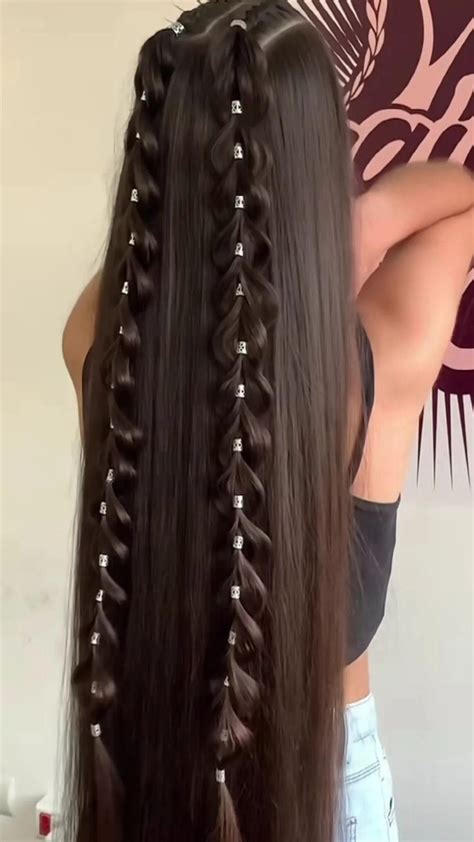Introduction: The Allure of Braided Human Hair

Braided human hair has captivated the hearts of individuals worldwide for centuries, adorning heads with intricate patterns and exuding an aura of timeless elegance. With its versatility and ability to cater to diverse hair types and preferences, it has become a go-to option for those seeking to elevate their appearance.
Statistics: The Prevalence of Braided Hair
According to the National Hair Survey conducted by the American Hair Products Association, over 50% of women in the United States have worn braids at some point in their lives. This statistic highlights the widespread appeal and popularity of this timeless hairstyle.
Benefits of Braided Human Hair: Why It Matters
-
Protective: Braids provide a protective layer for natural hair, shielding it from environmental damage, breakage, and tangles. This protective barrier helps maintain hair health and promotes growth.
-
Versatile: Braids offer endless styling possibilities, from intricate cornrows and box braids to elegant French and Dutch braids. They can be tailored to suit individual preferences and complement various face shapes and hair textures.
-
Low Maintenance: Compared to other hairstyles, braids require relatively low maintenance. They can be washed and conditioned less frequently, and their protective nature reduces the need for excessive styling.
-
Promotes Hair Growth: The gentle tension created by braids stimulates blood flow to the scalp, promoting healthy hair growth and reducing hair shedding.
-
Affordable: Braided human hair is a cost-effective alternative to other hair extensions, making it accessible to individuals from all walks of life.
Types of Braided Human Hair: Exploring the Options
The market offers a wide range of braided human hair options to cater to various needs and preferences. Here are some of the most popular types:
-
Individual Braids: These are single strands of human hair that are braided and then attached to the natural hair using a variety of methods, such as bonding, sew-in, or crocheting.
-
Lace Closure Braids: Lace closure braids are created by weaving individual braids into a lace base, which is then attached to the scalp. This creates a natural-looking, seamless transition between the natural hair and the extensions.
-
Ponytail Braids: Ponytail braids are single or multiple braids that are attached to a hairpiece or a clip. They provide an instant length boost and can be styled in various ways to enhance any occasion.
-
Micro Link Braids: Micro link braids involve attaching individual braids to the natural hair using tiny beads or rings. This method is designed to provide a secure hold without causing damage or discomfort.
How to Care for Braided Human Hair: A Step-by-Step Guide
-
Wash Sparingly: Braided hair requires less frequent washing than natural hair. It is recommended to wash your braids every 7-10 days to prevent product buildup and maintain their longevity.
-
Detangle Gently: When detangling braids, work your way from the ends to the roots to avoid breakage. Use a wide-toothed comb or your fingers to gently loosen any knots or tangles.
-
Condition Regularly: Conditioning braids is essential for maintaining their softness and moisture. Apply a leave-in conditioner or hair oil to the braids and massage it in gently.
-
Protect from Heat: Avoid using heat styling tools on braids, as this can damage the hair and weaken the extensions. If you must use heat, apply a heat protectant spray beforehand.
-
Regular Maintenance: Visit a professional hair stylist regularly for maintenance to ensure the braids remain secure and healthy.
Applications of Braided Human Hair: Beyond Aesthetics
While braided human hair is primarily used for aesthetic purposes, its versatility extends beyond simply enhancing appearance. Here are a few creative applications:
-
Medical Hair Replacement: Braided human hair can be used to create hair replacement systems for individuals experiencing hair loss due to medical conditions such as alopecia or chemotherapy.
-
Therapeutic Benefits: Braiding has been known to have therapeutic benefits, promoting relaxation and reducing stress. The gentle tension and rhythmic movements involved in braiding can create a calming effect.
-
Cultural Expression: Braids hold cultural significance in various communities, representing identity, heritage, and traditions. They can be a powerful tool for expressing creativity and celebrating one’s roots.
Comparison of Popular Braiding Styles
To help you make an informed decision, here is a comparison of some popular braiding styles:
| Style | Pros | Cons |
|---|---|---|
| Box Braids | Versatile and long-lasting; protective for natural hair | Can be time-consuming to install; may cause tension |
| Cornrows | Protective and versatile; can be worn in various patterns | May cause discomfort if braided too tightly; can be difficult to remove |
| French Braids | Elegant and stylish; can add volume to hair | Not as protective as other styles; may not hold well in fine hair |
| Micro Link Braids | Natural-looking and long-lasting; minimal damage to natural hair | Can be expensive; may require professional installation |
Conclusion: Braided Human Hair – A Timeless Classic
Braided human hair offers a myriad of benefits, from enhancing appearance to providing protection and therapeutic effects. With its versatility, affordability, and ability to cater to diverse needs, it is no wonder that braids have stood the test of time as a timeless classic in the world of hair extensions. Whether you are seeking a protective hairstyle, a stylish upgrade, or a cultural expression, braided human hair is a transformative solution that can empower individuals to embrace their unique sense of style and enhance their overall well-being.
